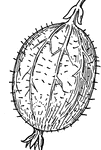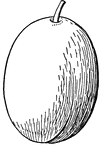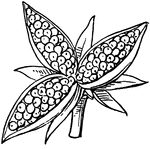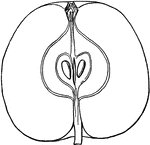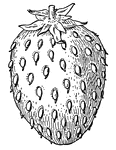
Fucus
Fucus is the generic name of various species of brown seaweed which form the main vegetation of rocky…
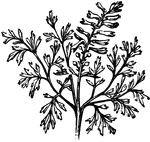
Common Fumitory
Fumitory, or Fumaria, is a genus of herbaceous plants belonging to the order Fumariaceae. The common…

Gentian
A genus of hardy plants, Gentians belong to the order Gentianaceae. They have a bitter taste, and one…

Geum Urbanum
Geum urbanum is a member of the genus Geum, a genus of hardy plants (Rosaceae). Not usually used decoratively,…

Glaux Maritima
Also known as Sea Milkwort, Glaux Maritima is a hardy perennial seashore plant belonging to the order…

British Golden-rod
British Golden-rod is a member of the large composite genus Solidago, which is chiefly North American.…

Inlaying (Grafting)
Grafting is a horticultural operation which consists in placing together the two cut surfaces of different…

Veneering (Grafting)
Grafting is a horticultural operation which consists in placing together the two cut surfaces of different…

In-Arching (Grafting)
Grafting is a horticultural operation which consists in placing together the two cut surfaces of different…
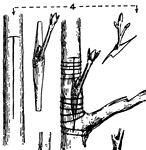
Side Grafting
Grafting is a horticultural operation which consists in placing together the two cut surfaces of different…

Crown Grafting
Grafting is a horticultural operation which consists in placing together the two cut surfaces of different…
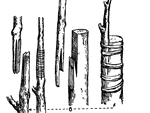
Whip Grafting
Grafting is a horticultural operation which consists in placing together the two cut surfaces of different…

Cleft Grafting
Grafting is a horticultural operation which consists in placing together the two cut surfaces of different…
Saddle Grafting
Grafting is a horticultural operation which consists in placing together the two cut surfaces of different…
Wedge Grafting
Grafting is a horticultural operation which consists in placing together the two cut surfaces of different…

Terminal Herbaceous Grafting
Grafting is a horticultural operation which consists in placing together the two cut surfaces of different…
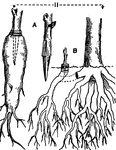
Root Grafting
Grafting is a horticultural operation which consists in placing together the two cut surfaces of different…

Grass of Parnassus
A grass of Parnassus is any member of the genus Parnassia, of the Saxifrage family, growing in damp…
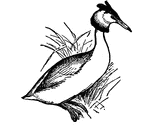
Great Crested Grebe
The Great Crested Grebe (Lophæthyia cristata) is a fresh-water, migratory, diving bird of the family…

Ground Ivy
Ground Ivy (Glecoma hederacea) is a common European labiate hedgerow plant, with trailing stems, kidney-shaped,…

Juncus Acutiflorus
Juncus acutiflorus belongs to a genus of grass-like herbs (Juncus) that grow in boggy places.

Juncus Squamosus
Juncus squamosus belongs to a genus of grass-like herbs (Juncus) that grow in boggy places.

Juncus Glaucus
Juncus glaucus belongs to a genus of grass-like herbs (Juncus) that grow in boggy places.
Juncus Conglomeratus
Juncus conglomeratus, also known as the common rush, belongs to a genus of grass-like herbs (Juncus)…

Juncus Compressus
Juncus compressus belongs to a genus of grass-like herbs (Juncus) that grow in boggy places.

Juncus Effusus
Known as the soft rush, Juncus effusus is nearly as common as the most common species, J. conglomeratus.…

Jute
Jute, also known as Calcutta Hemp, is a fiber obtained from several species of the genus Corchorus of…
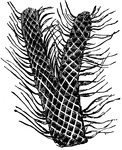
Portion of Lepidodendron
This illustration shows a portion of Lepidodendron. Lepidodendron is the generic name of a large and…

Spike'nard
"A highly perfumed ointment prepared from a plant in india growing in short spikes." Pictured is the…
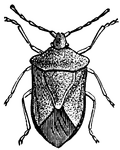
Plant-bug
Dotted leg plant-bug, one of many different heteropterous insects which suck the juices of plants.

Corn Plant
Corn plants with the surface of the soil "laying by" in accordance to the Williamson Plan.

Transplanting Machine
A transplanting machine. It sets and waters the plants as fast as the team pulls the machine along the…
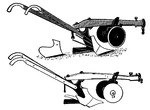
Plows for Sweet Potato Harvesting
Plows used to dig sweet potatoes. "The long vines must be first disposed of. They are usually pulled…

The Creation of the World - Adam and Eve, Animals, Plants,
"In the beginning God created the heavens and the earth." Genesis 1:1 ASV Illustration of God sitting…
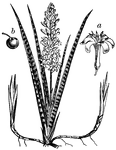
Snake Plant
Sansevieria Zeylanica is the Latin name, but this plant is also called a Mother-in-law's Tongue. "A…



